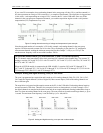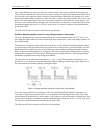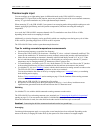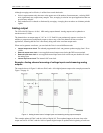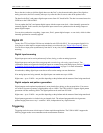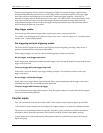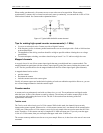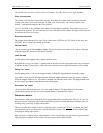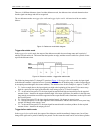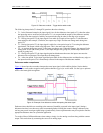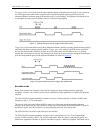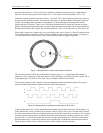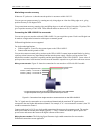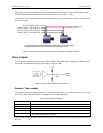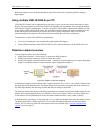
USB-1616HS-2 User's Guide Functional Details
28
The counter rolls over on the 16-bit (counter low) boundary, or on the 32-bit (counter high) boundary.
Clear on read mode
The counter counts up and is cleared after each read. By default, the counter counts up and only clears the
counter at the start of a new scan command. The final value of the counter—the value just before it was
cleared—is latched and returned to the USB-1616HS-2.
Clear on read mode is only available if the counter is in asynchronous mode the. The counter's lower 16-bit
value should be read first. This will latch the full 32-bit result and clear the counter. The upper 16-bit value can
be read after the lower 16-bit value.
Stop at the top mode
The counter stops at the top of its count. The top of the count is FFFF hex (65,535) for the 16-bit mode, and
FFFFFFFF hex (4,294,967,295) for the 32-bit mode.
32-bit or 16-bit
Sets the counter type to either 16-bits or 32-bits. The type of counter only matters if the counter is using the
stop at the top mode—otherwise, this option is ignored.
Latch on map
Sets the signal on the mapped counter input to latch the count.
By default, the start of scan signal—a signal internal to the USB-1616HS-2 that pulses once every scan period
to indicate the start of a scan group—latches the count so that the count is updated each time a scan is started.
Gating "on" mode
Sets the gating option to "on" for the mapped channel, enabling the mapped channel to gate the counter.
Any counter can be gated by the mapped channel. When the mapped channel is high, the counter is enabled.
When the mapped channel is low, the counter is disabled (but holds the count value). The mapped channel can
be any counter input channel other than the counter being gated.
Decrement "on" mode
Sets the counter decrement option to "on" for the mapped channel. The input channel for the counter
increments the counter, and you can use the mapped channel to decrement the counter.
Debounce modes
Each channel's output can be debounced with 16 programmable debounce times from 500 ns to 25.5 ms. The
debounce circuitry eliminates switch-induced transients typically associated with electro-mechanical devices
including relays, proximity switches, and encoders.
There are two debounce modes, as well as a debounce bypass, as shown in Figure 13
. In addition, the signal
from the buffer can be inverted before it enters the debounce circuitry. The inverter is used to make the input
rising-edge or falling-edge sensitive.
Edge selection is available with or without debounce. In this case the debounce time setting is ignored and the
input signal goes straight from the inverter or inverter bypass to the counter module.



